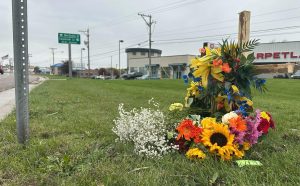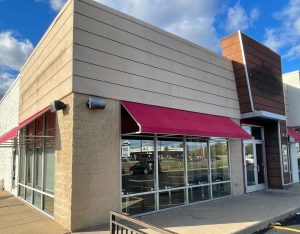Health services seeks space
August 1, 1990
The University Health Services’ new home is long on hallways, bathrooms and televisions, but short on usable space.
Most medical services moved to the Holmes Student Center’s second floor hotel rooms at the end of the spring semester so asbestos removal could begin at the health service’s old location.
“It’s cramped,” said Nurse Coordinator Helen Traglia.
And she might have added uncomfortable. On Friday the second floor hallway that functions as a reception area and waiting room for gynecology, the walk in clinic and triage felt 10 degrees warmer than the rest of the building because it is not air conditioned.
Most health services employees agreed privacy was at a minimum now, and that everyone was growing closer–at least spatially.
Gynecology settled into the second floor and made a good use of available space by storing gowns and other supplies in unused bathtubs and in cardboard boxes stashed under desks and tables.
But gynecology should not get too comfortable. They will be forced to move at the end of the summer.
“As they have us now, there is not enough room for both gynecology and the walk in clinic on the same floor,” of the student center, said Evie Schwartz, coordinator for gynecology.
The problem is gynecology does not know where they will be moved to.
“We’re almost in August now, and we don’t know where we are going,” she said.
Gynecology might move to the DeKalb Clinic, 217 Franklin St., if current construction there is completed in time, said Health Services Director Rosemary Lane.
But, “if we are left in the space we have now, services will have to be cut,” Schwartz said.
She predicted if the move does not happen, gynecology will only be able to offer emergency care to students.
Relocating gynecology and cutting their space was a particular problem for that department. Here “the patients’ privacy is at a minimum. Where will we go now to talk to a patient?” Schwartz said.
She said because gynecology has only two examining rooms and an office the doctors and nurses must stand in the hallway’s corners to speak with a patient privately.
Processing students through gynecology is another problem.
There are two examining rooms, and the preliminary work of a gynecological exam cannot be done by someone else while a doctor examines another patient, Schwartz said.
The health center’s pharmacy lost 30 to 40 percent of its storage space, said pharmacist Lynn Laseman.
“The biggest inconvienience is that now we have three chairs (for students to wait in while prescriptions are being filled) instead of an immense waiting room,” Laseman said.
The injury clinic also suffers from a lack of space.
The professionals who treat lacerations, sprains and head injuries on the NIU campus managed to compress the contents of eight rooms and two big halls into two medium sized rooms, Traglia said.
“Processing patients will be a whole lot slower,” she said.
At the health service’s old location, the maximum time a student would wait before being seen at the injury clinic was 30 minutes, Traglia said.
“With only one or two people waiting in the summer, a half hour wait is not unusual,” because of the clinic’s reduction in examining rooms from five to almost three, she said.
One health services department did not complain about the lack of space. Handicapped services coordinators Sue Reinhardt and Linn Sorge agreed they have plenty of room in Neptune East.
But, the new location almost proved dangerous for a blind student who almost walked into a saw in the middle of the Martin Luther King Commons construction, Sorge said.






